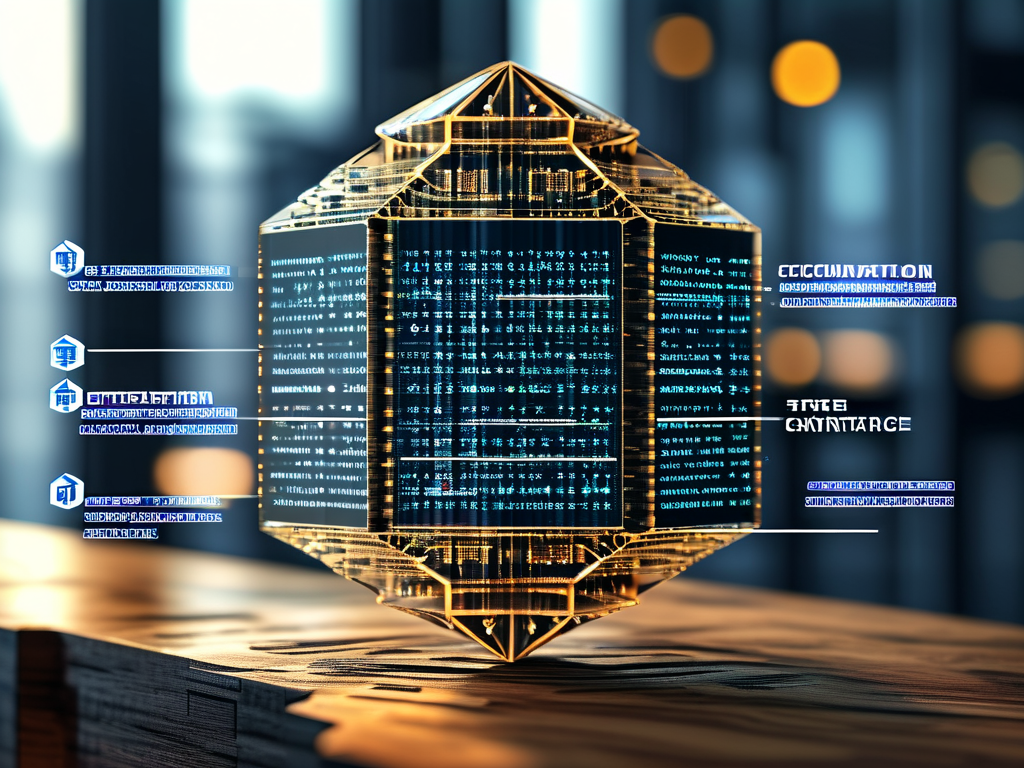Blockchain technology has emerged as a transformative force across industries, yet its foundational traits remain widely misunderstood. This article explores seven defining characteristics that differentiate blockchain from conventional data management systems while addressing practical applications and limitations.

Decentralized Architecture
Unlike traditional databases controlled by centralized entities, blockchain operates through a distributed network of nodes. This design eliminates single points of failure and reduces reliance on intermediaries. Bitcoin's 13-year operational history without centralized oversight demonstrates this feature's resilience. However, decentralization introduces complexities in governance and protocol upgrades, as seen in Ethereum's transition to proof-of-stake.
Immutable Recordkeeping
The cryptographic chaining of blocks creates tamper-evident records. Each transaction undergoes verification through consensus mechanisms like Proof-of-Work or Proof-of-Stake before permanent storage. While immutability enhances auditability, it raises challenges for data correction – a concern highlighted by the 2016 DAO hack incident requiring Ethereum's controversial hard fork.
Transparency with Pseudonymity
Public blockchains offer transaction visibility while maintaining participant anonymity through cryptographic addresses. This duality enables supply chain tracking applications where stakeholders verify product journeys without exposing sensitive commercial details. Private blockchains, conversely, implement permissioned access to balance transparency with confidentiality.
Enhanced Security Framework
Blockchain's security stems from multiple layers: cryptographic hashing, consensus protocols, and network decentralization. The 256-bit SHA algorithm used in Bitcoin would require billions of years to crack with current computing power. However, security vulnerabilities persist at application layers, as evidenced by decentralized finance (DeFi) protocol exploits exceeding $3 billion in 2022.
Smart Contract Automation
Self-executing contracts encoded on blockchain enable trustless agreements. Ethereum's ERC-20 standard revolutionized tokenization, while newer platforms like Solana achieve 65,000 transactions per second for micro-contract execution. Legal debates continue regarding smart contract enforceability in traditional judicial systems.
Cross-Border Interoperability
Blockchain networks facilitate seamless value transfer across geographical boundaries. Ripple's payment solutions demonstrate 60% cost reduction in international remittances compared to legacy systems. Emerging cross-chain protocols like Polkadot's parachain architecture aim to connect disparate blockchain ecosystems.
Scalability Challenges
While offering numerous advantages, blockchain faces throughput limitations. Bitcoin processes 4-7 transactions per second versus Visa's 24,000 TPS capacity. Layer-2 solutions like Lightning Network and zk-Rollups attempt to address these constraints through off-chain computation and cryptographic proofs.
The environmental impact of energy-intensive consensus mechanisms remains contentious. Bitcoin mining consumes 127 terawatt-hours annually – comparable to Norway's total electricity usage. This has spurred innovation in green mining initiatives using stranded methane and renewable energy sources.
In enterprise applications, blockchain shows particular promise for supply chain management. Walmart's food traceability system reduced contamination investigation time from 7 days to 2.2 seconds. Similar implementations in pharmaceutical logistics help combat counterfeit drugs estimated to cause 1 million deaths annually.
As the technology matures, hybrid architectures combining permissioned and permissionless elements are gaining traction. JPMorgan's Onyx network processes $1 billion daily in blockchain-based transactions while maintaining regulatory compliance. These developments suggest blockchain's evolution toward practical enterprise integration rather than complete system replacement.
Looking ahead, quantum computing poses both threats and opportunities. While capable of breaking current encryption standards, quantum-resistant algorithms like lattice cryptography are already being tested in blockchain prototypes. The technology's adaptability will determine its longevity in the face of evolving cyber threats.
Blockchain's true potential lies not in isolated implementation but as part of integrated digital ecosystems combining IoT, AI, and cloud computing. Singapore's TradeTrust framework demonstrates how blockchain can authenticate electronic trade documents while interfacing with existing legal and financial systems.
While challenges persist in scalability, regulation, and energy consumption, blockchain's core characteristics continue driving innovation across sectors. Its ultimate success will depend on balancing cryptographic principles with real-world usability – a complex equation that developers and policymakers are still working to solve.


